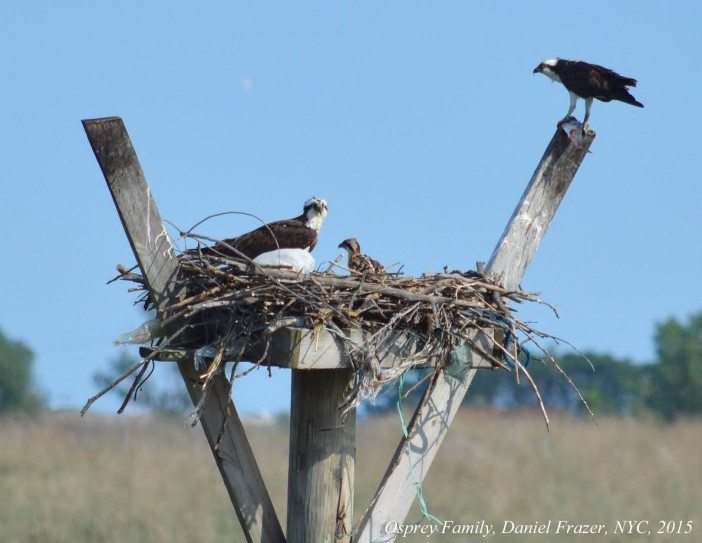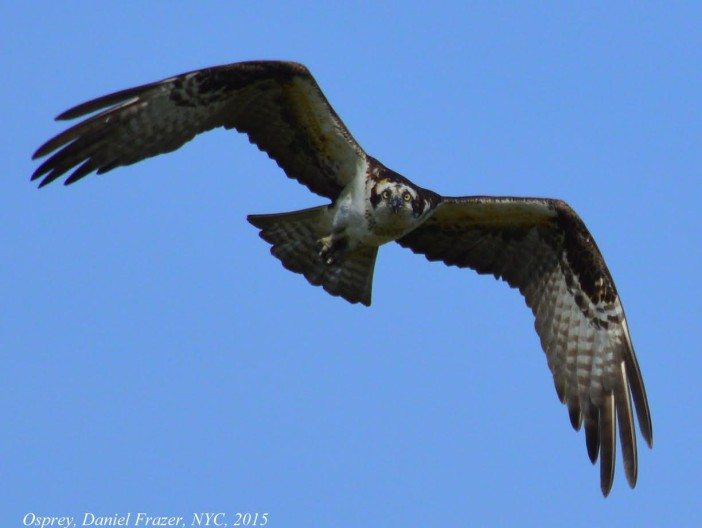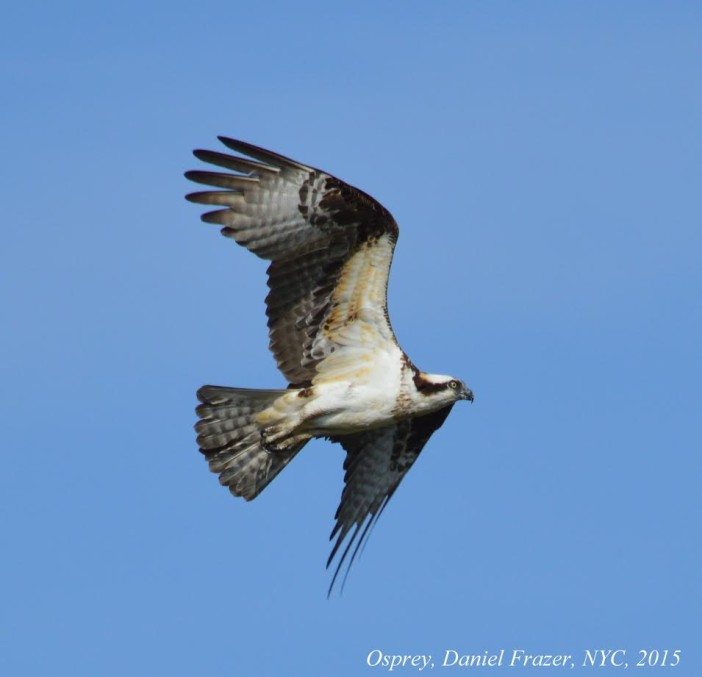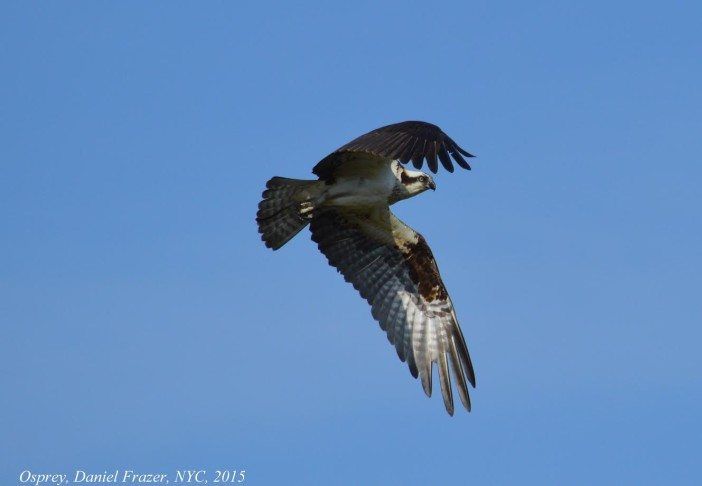Meet Your Neighbors: The Osprey, A Mysterious Bird Of Prey That Calls The Marine Park Salt Marsh Home


by Daniel Frazer
The Salt Marsh at Marine Park, home to at least 230 different species of birds throughout the year, has again successfully hosted an osprey family,
The osprey is a unique bird of prey, in that its linneage is a bit of a mystery. While most birds of prey fall neatly into either the accipiter (eagles, some hawks), buteo (hawks, such as the common red-tailed hawk) or falcon family, the osprey stands alone with many unique physiological differences. The osprey is also one of the most widely distributed birds of prey in the world, even being seen in Australia.
Ospreys are large birds that almost exclusively eat fish. Come visit the the Salt Marsh Nature Center (Avenue U and East 33rd Street) and scan above the water for what at first might look like a very large, dark gull. The osprey with its keen eye-sight, circles above the water until it spots a fish, which it will then pursue in a breath taking spiral plunge directly into the water. The osprey has an amazing rate of success and you’ll surely be rewarded with this awesome sight with even just a few minutes of observation.

See if you can tell whether you’re looking at the male or female osprey. Most often, the male osprey will be the common one to see hunting. However, usually at least once a day mom will leave dad to watch the kids and stretch out her even bigger and more powerful wings.
Like with most birds of prey, the male is smaller and less powerful (though certainly not weak!) than the female. While the diet between a female and male osprey does not differ significantly, the female bird of prey will typically take larger hunts. A female golden-eagle (not seen in NYC, sadly) can quite easily take down small deer, for example.
Osprey are particularly easy to determine gender compared to other birds of prey in that they display fairly clear sexual dimorphism (physical or behavioral differences). Look for the large, prominent “necklace” on a female osprey opposed to the smaller “necklace” on the male. As well, the male is quite obviously smaller, though this can be hard to judge without a point of reference.

The osprey is particularly cherished among New York City’s naturalists due to being nearly wiped out in the past from the deadly DDT pesticide use. DDT rendered the egg-shells of the osprey too thin to withstand normal brooding behavior, and they would crush beneath the mothers weight. DDT ravaged many bird populations but thankfully, the osprey has made quite the comeback. While the couple in the Salt Marsh are probably the easiest breeding pair to see, several other nests exist throughout the city, particularly in Jamaica Bay Wildlife Refuge.

When viewing the osprey and their nest, remember to be respectful. Do not attempt to provoke the ospreys into behavior by throwing anything, flashing lights or shouting, A good rule of thumb is to always treat animals how you’d like yourself and your family to be treated.
Also, if you or your friends or family use jet-skis or boats, keep your distance, still! While osprey are quite powerful, they’re also frightful as all wild animals are. If we respect nature, we get to see nature, and all it takes is one display of an osprey fishing to make many life-long lovers of these powerful birds.
Daniel Frazer is an amateur naturalist and birder born and raised in Southern Brooklyn. Daniel spends an inordinate amount of time birding around Brooklyn and is hoping to see every bird species this city has to offer. He writes a “wildlife and nature” column for our sister site, Bensonhurst Bean. See more of his articles and photos here.




